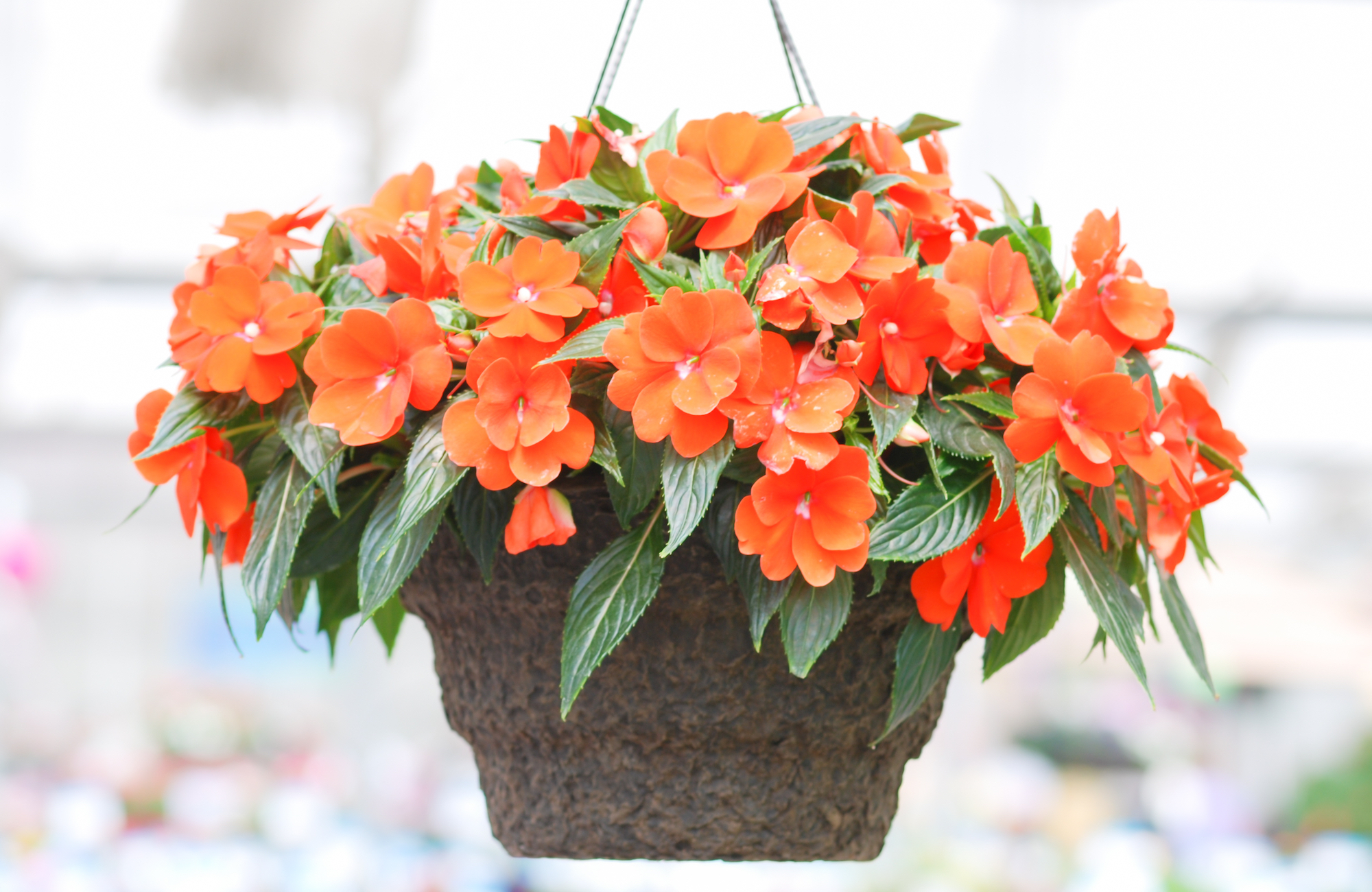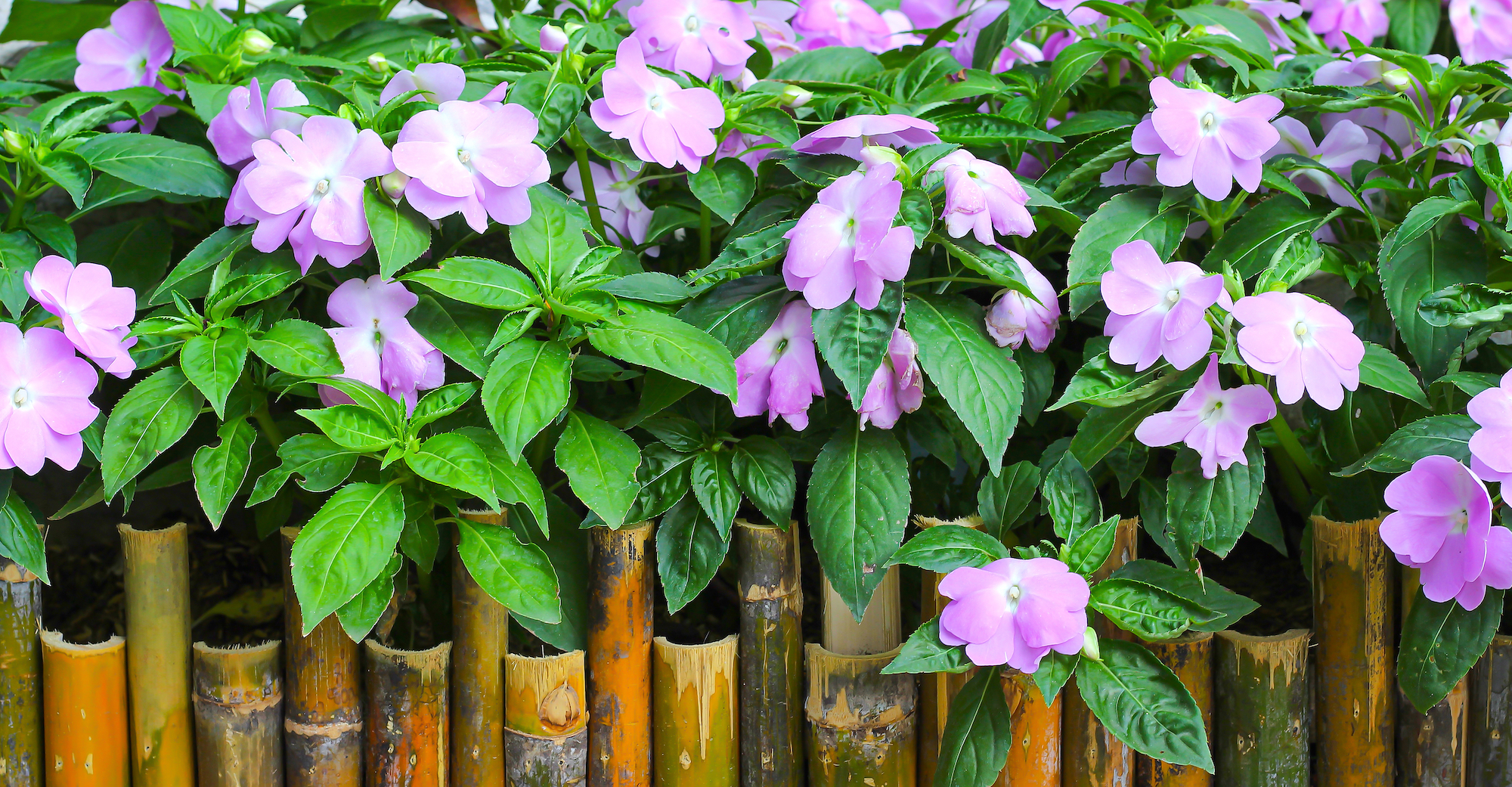
Caption
Colorful impatiens!
Planting, Growing, and Caring for Impatiens
Read Next
Types
- Lollipop series (I. walleriana) ‘Fruit Punch Rose’ is a compact, well-branched variety with superbly vivid colors.
- Tom Thumb Series (I. balsamina) is a dwarf variety with large, double, brightly colored flowers.
- Beacon® impatiens are highly resistant to downy mildew and will keep blooming reliably until frost.
- Swirl Series (I. walleriana) has pretty pink and orange flowers with petals in red.
Gardening Products
More Like This
Hi Violet, Thanks for your question. Your double impatiens can be either a house plant or grown outdoors. They are best known as garden bed plants that provide a pop of color throughout the growing season, but are also well suited for containers and hanging baskets. Since impatiens are a tropical plant, they are very sensitive to cold and should not be put outdoors or planted until there is no threat of frost.
Impatiens need rich, moist, and well-drained soil and do best in partial shade. They need regular water, so keep them moist, but not too wet. Impatiens grown in containers or hanging baskets will need more water.
Aloha, Jim,
You've done well to keep an impatiens plant for several years; they are generally grown as annuals but of course you have ideal conditions. Watering impatiens anywhere—too much or too little—can be tricky. Your plants might be getting too much water; that could cause them to be saturated and droop. If they are drooping in the midday, when the temp is the warmest in hot sun, they may be drooping in response but might perk up later in the day if you leave them alone. Then again it might be time to start or purchase some new ones. We hope this helps!
- « Previous
- 1
- 2
- …
- 10
- Next »












Comments